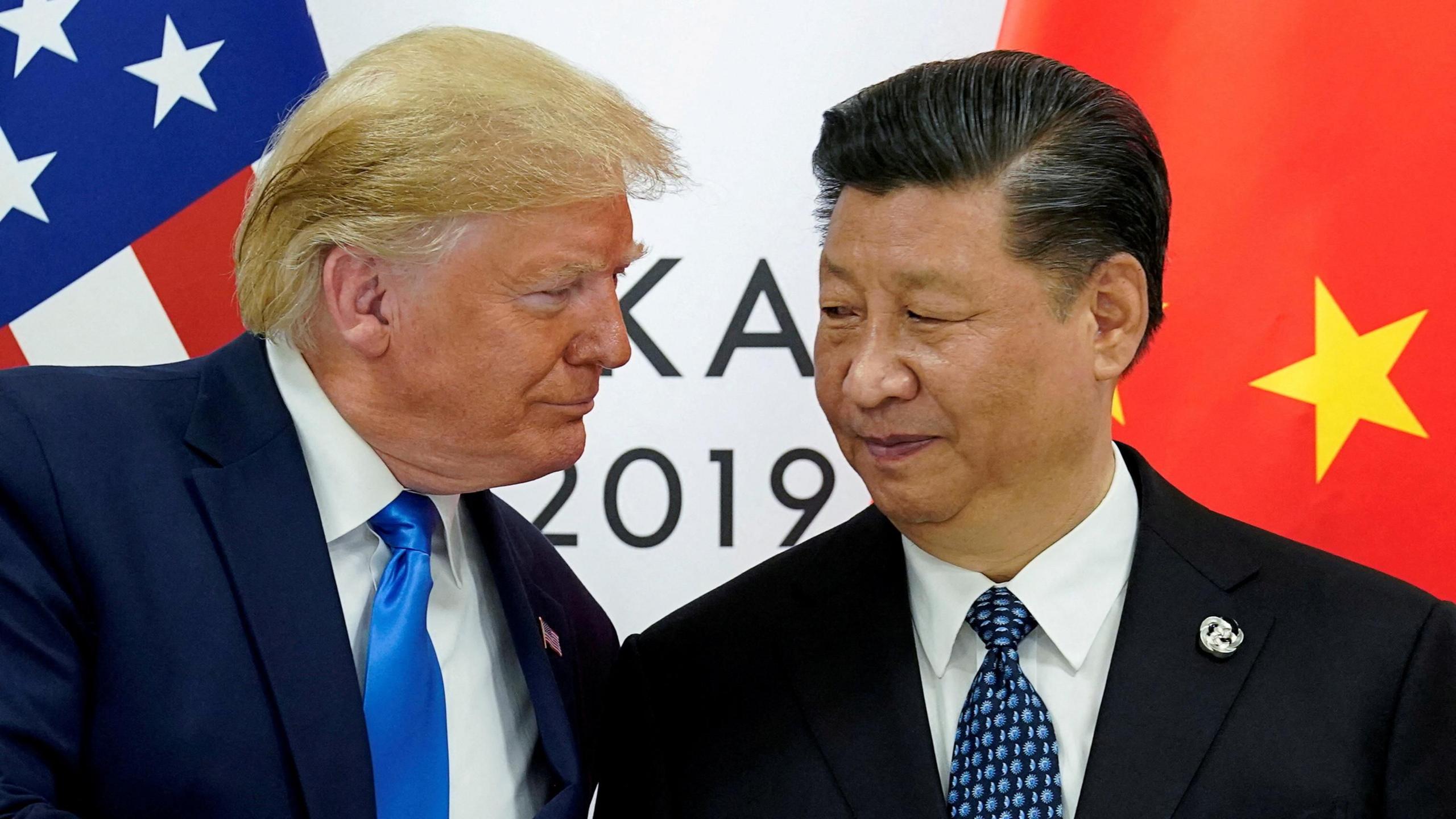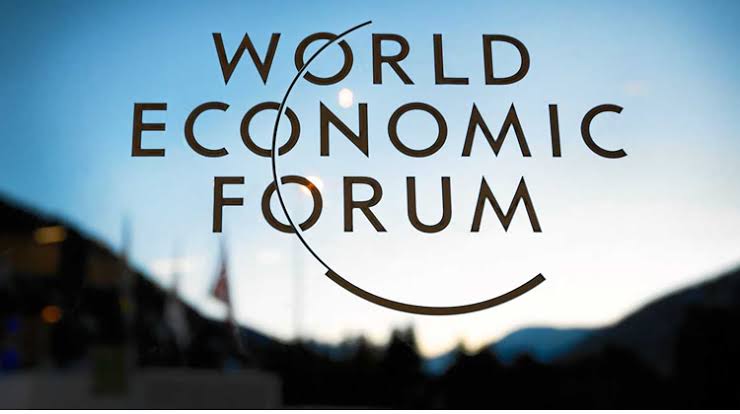By Global GeoPolitics
When the United States launched its economic offensive against China’s technological rise, its policymakers assumed the power lay in the tools of finance and sanctions. Export bans, entity lists, tariff escalations, and the weaponisation of semiconductor supply chains were designed to crush Beijing’s ambitions. At the heart of this was a belief that the West, backed by capital markets and military alliances, could deny China access to the future. It has not turned out that way. In restricting its exports of rare earth technologies and critical inputs, China has delivered a direct and irreversible blow to the foundation of that strategy. Washington now finds itself trapped in a supply chain maze of its own making, relying on the industrial muscle of the very state it tried to isolate.
On 9 October 2025, the Chinese Ministry of Commerce formally imposed sweeping controls on rare earth-related technologies. These include not only raw material exports but also the technical processes, equipment and know-how involved in mining, smelting, separation, and the manufacture of rare earth magnets. Also included were overseas items manufactured using Chinese inputs or machinery. The new controls target defence-related companies in the United States directly. Among those affected are Huntington Ingalls and Flat Earth Management, both of which had recently signed agreements with the Pentagon. The move was not only timely but deliberately disruptive. It came days after the U.S. finalised a public-private investment programme to reduce dependency on Chinese critical materials. Before that initiative could begin, China removed the ground it was supposed to stand on.
The impact is extensive and long term. The United States imports roughly 70 percent of its rare earths from China. For some specific materials, such as dysprosium and neodymium, the dependency exceeds 90 percent. These elements are vital in the production of electric motors, guided weapons, radar systems and advanced computing equipment. The Pentagon estimates that 78 percent of its platforms require rare earth elements either directly or indirectly. Substituting these inputs is not a matter of market preference or cost arbitrage. In most cases, substitutes do not exist. When U.S. companies experienced rare earth supply disruptions in 2023, it caused months of delay and drove magnet prices up five to six times. With the latest controls, China has not only resumed but deepened the strategy of calibrated supply withdrawal.
The core of China’s move lies not in the raw materials but in what the Carnegie Endowment has called the “technical bottlenecks of modern production.” Processing, separation, and magnet fabrication technologies are overwhelmingly Chinese. Even when the extraction happens abroad, in Australia, Brazil, or even the United States, the process of converting ores into usable inputs remains controlled by Chinese technology and capital goods. One example is Vietnam’s new rare earth separation facility, which uses Chinese equipment throughout its supply chain. Under the new rules, expanding that facility now requires permission from Beijing. This is not resource nationalism. It is system control.
The strategic function of this move must be understood in the context of the U.S. strategy itself. In 2022 and 2023, Washington imposed a wide series of technology sanctions on China. These included bans on the export of extreme ultraviolet lithography equipment, constraints on chip design software, and penalties on firms with any U.S.-origin components. The underlying logic was described by the Centre for Strategic and International Studies as “decoupling by strangulation.” The U.S. intended to starve China’s technological sectors while cornering supply of critical inputs. That plan assumed American dominance in upstream technologies and an ability to control downstream usage through alliances and extraterritorial enforcement.
What it overlooked was the unglamorous backbone of modern systems-materials. Rare earths, graphite, gallium, and lithium are not headline items in financial press coverage, but they form the non-negotiable base of everything from semiconductors to smart weapons. Without graphite anodes, there are no lithium batteries. Without high-purity neodymium, there are no high-efficiency magnets. Without those, there is no scaling of electric vehicles, AI compute clusters, or next-generation radar arrays. The United States can subsidise chip fabrication, but it cannot conjure critical elements into existence. When China blocked exports of gallium and germanium in 2023, it was an early test of that dependency. The new rare earth controls formalise it.
The current situation illustrates a material imbalance at the heart of Western power. The United States dominates global finance and digital media, but it has lost control over physical production. Its industrial base was hollowed out over four decades of offshoring. Environmental constraints, labour de-skilling, and the abandonment of metallurgy have left it without the capacity to rapidly rebuild. Even if the U.S. were to re-open all its known rare earth deposits tomorrow, it would still require Chinese expertise and machinery to make those resources usable. Extraction without refinement solves nothing.
The knowledge deficit is equally important. Rare earth processing is not simple mining; it involves complex chemical procedures requiring high-temperature stability, precise separation techniques, and environmental risk mitigation. China’s capabilities in this area were not developed by accident. For decades, it invested in vertical integration and technical education, ensuring dominance not only in volume but in complexity. The result is a global landscape where alternatives exist only in theory. Australian, Canadian and American mines all rely on Chinese processing or Chinese equipment. Even Japanese firms that operate independent supply chains remain tethered to Chinese upstream processes.
The economic cost of this asymmetry is already visible. The Inflation Reduction Act and CHIPS Act poured billions into American manufacturing. But the resulting factories are missing key inputs. Delays in magnet supplies are already affecting U.S. wind turbine deployment. EV production targets are being scaled back due to rising anode prices and shrinking margins. AI infrastructure, which drove most of the United States’ GDP growth in early 2025, is facing new headwinds. Data centre construction now contends with cooling equipment shortages and cost inflation due to input constraints. Goldman Sachs recently warned that delays in key infrastructure inputs could shave 1.2 percentage points off projected growth if not resolved by Q2 2026.
The geopolitical implications are more severe. By exposing the material dependencies of its adversary, China has undermined the credibility of U.S. deterrence. In a confrontation over Taiwan or the South China Sea, it is not only military assets that matter but the logistical backbone supporting them. Jet engines, submarines, radar systems, satellite hardware, all depend on Chinese rare earths. Delays in delivery, gaps in maintenance, or cost overruns in procurement will reduce operational readiness. It is one thing to possess a fleet; it is another to maintain it under conditions of restricted supply.
China’s policy is not based on retaliation but on structure. It mirrors the exact mechanisms used against it. When the U.S. banned chip sales to Huawei, it invoked national security. When China restricts rare earth exports for the same reason, it points to the same principle. Under the Export Control Law and Dual-Use Items Regulations, Beijing has legal grounds to restrict items that may contribute to arms proliferation. In this case, the standards are applied narrowly and specifically to items used in Western military supply chains. The move has precedent. The European Union invoked the same reasoning in banning certain dual-use goods to Russia. What differs now is that the side making the rules is no longer the one writing the narrative.
Independent analysts such as Dr. Michael Auslin at the Hoover Institution have noted that the Western alliance has mistaken legal power for productive capacity. Legal frameworks mean little if you cannot secure the inputs. Subsidies mean little if you cannot translate them into goods. The global economy, as it stands, does not reward declarations but production. That production, in this case, is overwhelmingly Chinese.
Some voices in Washington have begun to acknowledge this shift. Christopher Balding, a former Peking University professor and now a vocal critic of Chinese policy, has admitted that “the problem is not just market structure; it’s strategic dependency baked into 40 years of outsourcing.” Similar remarks have been made by Dan Wang at Gavekal Dragonomics, who observed that “rare earth control is the industrial version of software sanctions, without the materials, the whole stack fails.” These are not ideological statements but technical assessments. The stacks are already failing.
There are no immediate solutions. Rebuilding supply chains requires more than capital. It needs engineers, metallurgists, technicians, and regulatory reform. Even under optimistic timelines, the United States would need between five and ten years to reach partial independence in critical mineral processing. That timeline assumes smooth political consensus, rapid environmental approval, and zero delays in equipment procurement. None of these conditions currently exist. Meanwhile, China continues to expand its vertical integration, investing not only at home but across Africa, Southeast Asia, and Latin America. Projects in Zimbabwe, Myanmar, and Bolivia are securing future access to rare earth and battery metals under long-term agreements. These are not speculative deals. They are secured with infrastructure, training, and credit lines.
China’s strategy operates on material time. It does not seek quick headlines but durable control. Each move, from gallium to graphite to rare earths, builds a layered system of control over the core functions of advanced production. By focusing on tools and techniques rather than just goods, it has moved upstream in the supply chain war. In doing so, it has reversed the narrative. The United States once saw itself as the guardian of the global commons. Now it finds its industrial base exposed, its strategic autonomy compromised, and its allies unsure of what security guarantees actually mean under these conditions.
As for the financial system, the growing use of the renminbi in cross-border settlement further weakens the West’s leverage. Commodity trading platforms in Asia are increasingly allowing non-dollar payments for key resources, including rare earths. Russia and the Gulf states have signalled willingness to expand renminbi use in bilateral trade. Even where the dollar remains dominant, the direction of movement is clear. Control of resources, not reserve status, now determines strategic leverage. Bretton Woods arrangements gave the dollar its hegemony in an era of Western industrial pre-eminence. That era no longer exists. Strategic autonomy now depends on control of inputs, not only money flows. Without the materials to build, digitise, weaponise, or electrify, no financial system, however dominant, can secure primacy.
Western policymakers have been slow to grasp the shift. Replacing supply dependencies with subsidy-driven industrial policy assumes time is on their side. It is not. Material realities do not yield to political cycles or fiscal promises. Factories cannot run on ideology. Weapons systems cannot operate without components. Energy transitions cannot proceed without minerals. Without rare earths, graphite, and lithium, none of the projected futures, from net zero to AI supremacy, can be delivered.
The attempt to sanction China into submission has produced the opposite result. It accelerated China’s move towards deeper integration and upstream control. The sanctions pushed Beijing to secure not just market share but structural dominance over processes. The result is a rare earth architecture that operates independently of Western influence, under Chinese legal and industrial frameworks, and increasingly priced and transacted outside the dollar system. The United States and its allies now face a closed loop they cannot easily enter, replicate, or disrupt.
Some suggest diversifying supply through alliances with countries like Australia or Canada. But those states rely on Chinese processing and technology. Others point to Africa or Latin America, but China’s presence in those regions is already dominant. Its infrastructure-for-resources deals have locked in access for decades. Western projects in those regions are slower, more expensive, and subject to regulatory and political instability. Moreover, even if the ore is mined elsewhere, the challenge remains turning it into usable input, a process still controlled by Chinese firms.
The structural imbalance is not only economic. It is epistemic. Western institutions continue to overestimate the value of rules and underappreciate the role of competence. Export control law, WTO mechanisms, or strategic partnerships do not compensate for technical inferiority. The United States cannot build supply chains on declarations, press releases, or summits. It must produce, refine, and master. That process takes time and knowledge, two things its system has spent decades divesting from.
There is no immediate fix. China has seized a position that took thirty years to build. Its moves are not reactive but premeditated. The October 2025 controls are not an end point. They are part of an incremental process of building autonomy while denying the same to its adversaries. In that sense, they are both defensive and pre-emptive. The message is clear: supply chain sovereignty is the foundation of geopolitical leverage. Without it, strategy becomes theatre. The United States built an empire on technology, capital and coercion. But its engineers now live abroad, its factories are dismantled, and its coercive tools are increasingly mirrored by others. China, by contrast, built factories, trained metallurgists, and secured supply chains. The new rare earth controls are not retaliation; they are a reckoning.
In a further escalation of its materials leverage, China is now withholding heavy rare earth magnet exports to India unless New Delhi formally guarantees that none of the shipments will be diverted to the United States. Indian importers have submitted end-user certificates, denying any use in weapons systems or foreign transfers, but Beijing has rejected these as insufficient, demanding controls akin to those under the Wassenaar Arrangement. China is not a signatory to the arrangement but is now effectively imposing equivalent standards unilaterally. The withheld materials, vital to India’s electric vehicle and electronics sectors, include dysprosium and terbium-based magnets essential for high-torque motors. The suspension of shipments, which began following export controls in April, has forced Indian two-wheeler firms to shift to lower-grade domestic alternatives, compromising performance and efficiency. With light rare earth exports resuming post-SCO summit, the continued hold on heavy rare earths has exposed the fragility of supply chains dependent on opaque foreign regulatory environments. China controls over 90% of global supply and has now ceased publishing public export data, converting market dominance into a strategic tool during bilateral negotiations. India imported 870 tonnes of heavy rare earths worth $34.4 million in FY25, but without resolution, downstream sectors including aerospace, defence and renewable energy face production shortfalls and increased input volatility. The Indian government has not endorsed Beijing’s terms, leaving compliance efforts to private firms without clear sovereign guarantees, which further compounds risk and uncertainty for strategic industries dependent on uninterrupted rare earth flows.
The global order is shifting not because of war or diplomacy but because of extraction, processing, and transformation. In the contest between thermodynamics and financial engineering, the former always wins. Material systems do not respond to spin. They respond to heat, pressure, knowledge, and time. China controls those systems now. The West must decide whether it is willing to rebuild from the ground up or continue mistaking leverage for power. There is no middle ground.
Authored By: Global GeoPolitics





